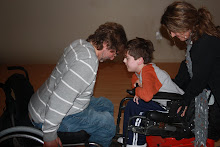Osteoporosis is the thinning of bone tissue and loss of bone density over time. This causes bones to become weak and brittle. It occurs when the body fails to form enough new bone, when too much old bone is reabsorbed by the body, or both. Normal bone formation requires two essential minerals, calcium and phosphate. If you do not get enough calcium, or you body does not absorb enough calcium from the diet, then bone production and bone tissue can suffer. As you age, calcium and phosphate may be reabsorbed back into the body from the bones which make the bone tissue weaker. This is why the bones become brittle, fragile, and more prone to fracture even if no injury occurs.
In the early stages of bone loss, there is usually no pain or symptoms. However once bones have weakened by osteoporosis, symptoms might include: back pain, loss of height, stooped posture, a fracture that occurs more easily than expected.
Most people reach their peak bone mass by their early 20’s. As people age, bone mass is lost faster than it is created. Factors that might increase the likelihood that you’ll develop osteoporosis include age, race, lifestyle choices and medical conditions and treatment. Certain medications such as corticosteroids taken for a long period of time and family history also play a factor in osteoporosis. Sedentary lifestyle, excessive alcohol and tobacco use also play a part in increasing a person’s risk for osteoporosis. Osteoporosis has also been linked to seizures, depression, gastric reflux, and cancer. A lifelong lack of calcium, eating disorders and weight-loss surgery also increase a person’s risk for development of the disease.
Yoga has been shown to benefit persons with osteoporosis; however caution needs to be taken with certain poses. If there is significant bone loss due to osteoporosis (evidence by fractures due to thinning bones), exercise caution with forward folds (especially seated forward folds) due to risk of compression fracture in vertebrae, especially when the head is dropped. Other contraindicated poses would include knee to chest and straight leg raises, as well as high impact movement, and child’s pose as it compresses the front of the spine and could lead to fracture. Balancing poses and certain inversions should be modified using a wall for support. Certain inversion such as head stand might cause too much compression on the spine and are contraindicated. Balancing poses should be practiced with modifications as they test balance and lead to improvements which might prevent falls. Downward facing dog, and arm balances place weight on the wrists which are a frequent location of fracture and should be modified or avoided. Down Dog at the wall would be a safe alternative or dolphin.
Poses which should be practiced are weight baring poses which develop strength in the bone. Poses recommended for osteoporosis should:
• Be Weight-bearing
• Offer Resistance
• Increase Flexibility
YOGA POSES FOR OSTEOPOROSIS:
1. Prasarita Padottanasana (Wide-Legged Standing Forward Bend) This pose is weight bearing on the legs and feet, arms, wrists, and hands. It also encourages mobility in the hips and a concavity to the spine, rather than the convex, hump shape.
2. Virabhadrasana II (Warrior II) In addition to building bone strength, Warrior 2 strengthens your arm and leg muscles. This pose also improves your balance and stretches your inner thighs.
3. Nadi Shodhana (alternate nostril breathing) This breath works to bring equal amounts of oxygen to both sides of the brain, for effective mental functioning, restoring emotional calm. Improves focus and concentration, calms the nerves and creates mental stillness. Feel as if your whole body is centered over your coccyx (tail)bone and your mind is clear.
Monday, March 12, 2012
Subscribe to:
Posts (Atom)
